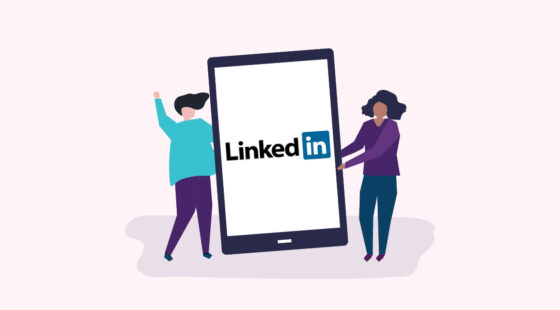You’ve heard it all the time as an executive leader….be decisive. That’s one of the reasons you have the job isn’t it? You can make decisions and more than that, you are believed to be able to make more of the right decisions than the wrong ones. But how do you do that? How do the best decision-makers actually raise their chances of calling the right shot at the right time more often than not?
Well, it starts with how you think of yourself as a leader. Many executives labor under the myth that they are the ones that have to come up with the idea, the solution, the {you fill in the blank}. This can be very isolating and if you buy into it, this kind of thinking can drive behavior that is more directive and potentially dictatorial. Most of all, it can be isolating and distance your key staff making them perceive you don’t trust them or need them. You as an executive come to be known as decisive alright….and also someone who speaks in sentences that end in a period. No interest in how anyone else thinks. You are all about you.
Mark Twain once said, “I use not only all the brains I have but all that I can borrow.” (Actually, President Woodrow Wilson said it but somehow, Mr. Twain got the credit at some point.) And in order to borrow a brain, or more accurately the thoughts it contains, you have to ask for it first. Yes, ask a question. And therein lies thethreat to status for many senior leaders. By asking, many executives mistakenly translate that into meaning that they don’t know the answer, the way, the process, whatever. It makes them feel like less. In fact, it makes you more. Here’s why.
The skills that top leaders need to possess is changing. Why? Because our world and its business landscape that drives economies all over the globe is changing. Leaders now and going forward cannot delude themselves into thinking that in this VUCA (Volatile, Uncertain, Complex, Ambiguous) world they are going to have all the answers or even know all the conduits to tap to get them. Many leaders know they need to put the best and brightest around them but the top leaders actually utilize them regularly without feeling threatened that it makes them look weaker. They know that it actually is the smartest move they can make….and they make it often. It makes them look confident, smart, able to connect with the people around them, approachable…the list goes on. It’s about being wise enough to know when, who and how much to engage others to help your thinking on a particular issue.
Look, there will always be the need for the leader to be decisive in the moment, drawing on their own knowledge and wisdom without engaging others’ perspectives. It’s a balance and a learning curve to gain the wisdom around this. One example, is the relationship a CEO has with her/his Board of Directors. It’s critical that they establish alignment with the board members and demonstrate competence around how to accomplish key goals and metrics as well as establishing a vision that will serve as the guiding light. It is also important that they are not afraid of asking the right questions to ensure they are aligned with expectations the board has. Finding the right balance will instill confidence in the Board that they have the right person at the helm.
I can’t tell you how many C-Suite executives have invited me to lunch to bemoan how the CEO who hired them to do a job doesn’t engage them or listen to their point of view on major issues that impact the organization. Kind of makes you go, hmmmmm….
Sure listening first and asking questions can make a leader feel vulnerable but often that’s just a story in their head. People love to feel valuable and when you ask them for their expertise or point of view, you are giving them a huge shot of status, respect and sense of positive self-esteem. People want to show you what they’ve got. As a leader, you have to give them those opportunities so that they know you are open to them initiating those opportunities in the future. It actually can make a leader look more confident when he or she is engaging others and not being territorial and putting themselves above others. There’s another benefit: By doing this you build better thinkers. When you build better thinkers, you build better teams that produce better outcomes. This frees you up to be more srategic and as a leader that will be the organization’s expectation of you.
Putting a question mark where you usually put a period is important because quite frankly, as Stanley McChrystal says, there’s been an “inversion of expertise” due to changes in technology and all that has brought with it. He asks, “How do you stay credible and legitimate as a leader when you haven’t done what the people you’re leading are doing?” One of the suggestions he has is being open to reverse mentoring from the lower levels. Be more transparent and know that now more than ever, relationships are the connective tissue that holds the troops together. I would also suggest to develop the habit of being more curious. When you ask questions of people, you seem interested and they will feel interesting. People like to see themselves as interesting. It keeps them engaged and wanting to give you more.
Stanley McChrystal makes some important points during his TEDtalk. He says at one point, that, “A leader isn’t good because they’re right. They’re good because they’re willing to learn and to trust.”
So the next time you catch yourself communicating in a stream of period-ending sentences, redirect yourself to end with a question mark. As Ret. Gen. McChrystal says, “Listen, Learn…then Lead.”
Reproduced with permission from Karla Robertson, PCC. Karla is The Executive’s NeuroCoach & Founder of Shifting Gears Business Coaching & Consulting. She works with senior level executives and their teams across all industry sectors on personal skills development, team development, critical communication and career advancement. Find out more at www.karlarobertson.com.
The opinions and experiences expressed by the author or subjects do not necessarily reflect those of Women in the Boardroom.






